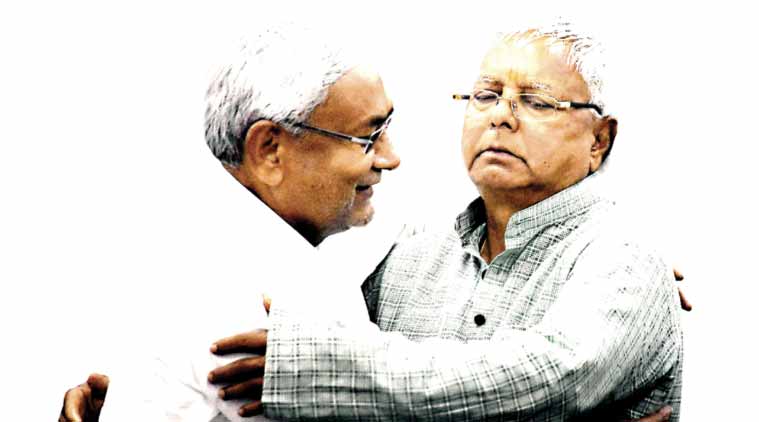Stay updated with the latest - Click here to follow us on Instagram
Bihar post-poll survey: Why did Lalu’s party fare better than Nitish’s despite the latter’s immense popularity?
Nitish Kumar’s core vote transfers better than Lalu’s does
 The survey suggests that vote transfer worked more effectively from Nitish to Lalu than the other way round.
The survey suggests that vote transfer worked more effectively from Nitish to Lalu than the other way round.
One of the biggest surprises in the victory of the mahagathbandhan has been Lalu Prasad’s RJD finishing ahead of Nitish Kumar’s JD(U) in both seats and votes. This happened despite both parties contesting on an equal number of seats and, more importantly, despite Nitish being the more popular leader and the one in whose name votes were sought by the Grand alliance. What explains this surprising outcome?
The post-poll survey by Lokniti-CSDS indicates that while arithmetic and chemistry worked wonderfully well for both partners, they seem to have worked a tad better for the RJD. Kurmis, the community to which Nitish belongs, voted with the same intensity for the RJD as they did for the JD(U); Yadavs, on the other hand, voted a little less strongly for the JD(U) than they did for the RJD.
WATCH VIDEO: Bihar Verdict 360°-IE’s Editors Answer The 6 Questions That Explain The Big Picture
The survey found that on seats that the RJD contested, nearly three of four (74%) Yadav voters voted for the party. But on seats that the JD(U) contested, Yadav consolidation behind that party was relatively less at 60% (three out of five voters).
WATCH VIDEO: Parties React To Bihar Results: Rahul Gandhi, Kailash Vijayvargiya & Javed Raza Speak
Kurmi consolidation behind the RJD and the JD(U), meanwhile, was nearly equal at 69% and 67%. Thus, Nitish was much more effective in transferring his core base to the RJD than Lalu was in transferring his to the JD(U). The RJD also netted a greater share of the votes of the extremely backward. In seats the RJD contested, the mahagathbandhan secured a higher proportion of votes than the NDA among EBCs and Mahadalits. This could mean a section of EBCs bought Lalu’s ‘forward versus backward’ rhetoric.
As for the Mahadalits voting more for the RJD than the JD(U), the possible explanation is that while they may have been angry with Nitish for having dethroned Jitan Ram Manjhi, they saw no reason to punish Lalu for Nitish’s action.
Survey data also suggest that barring upper castes, the initial unease of voters with Nitish for having tied up with Lalu subsided as the campaign progessed. While only 32% had approved of the alliance during Lokniti’s pre-poll study in late September, this figure rose to 42% by the post-poll survey.
These differences in how the backward and Dalit communities voted for the two Mahagathbandhan parties may appear only minor. While it’s true that Lalu has done better than Nitish, the survey found that 27% of mahagathbandhan voters would not have voted for the alliance had Nitish not been the chief ministerial candidate.
In many ways, the JD(U) and RJD fought the election not as two separate parties, but as a single party, and were supported by the Congress, which can perhaps also take the credit for having brought the two erstwhile rivals together. However, now that Nitish will lead a government in which his party has fewer MLAs than Lalu’s, how their relative strengths play out might be key to the longevity and functioning of the alliance.
Sanjay Kumar is Director, CSDS, and Shreyas Sardesai is Research Associate at Lokniti, CSDS







